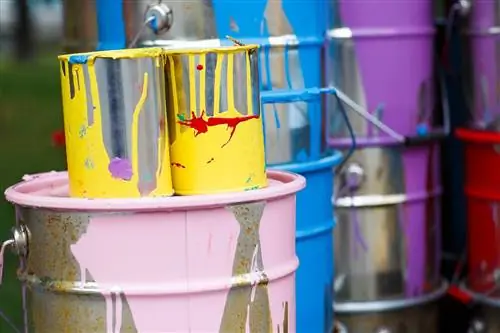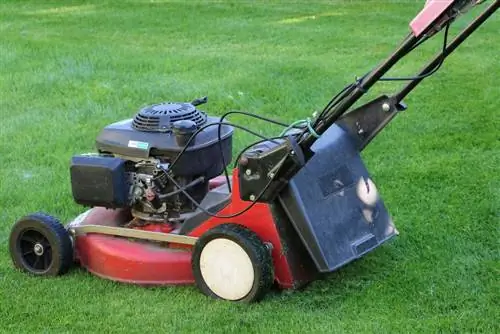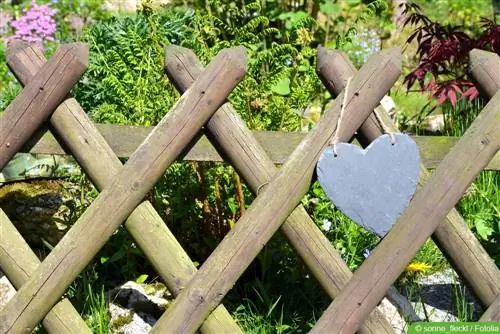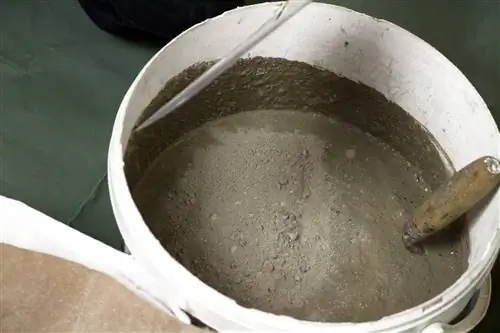- Author admin [email protected].
- Public 2023-12-17 03:39.
- Last modified 2025-01-24 12:45.
Under the appropriate conditions, wall paint can be disposed of in various ways. Because in liquid form, paints are so-called problem substances that can harm the environment. We'll tell you where you can dispose of wall paint and what costs it will incur.
Dispose of leftover paint
When painting, all of the paint is rarely used up. Therefore, the question then arises: “What to do with the leftovers?”
There are basically three ways to dispose of wall paint:
- Distribution as a problem substance
- Let the paint dry out
- keep safe
Liquid paint dangerous
Wall paint that is still liquid contains various substances that pose a danger to the environment and water. These include:
- Binder
- Dyes
- Plastics
- Solvent
- Oils
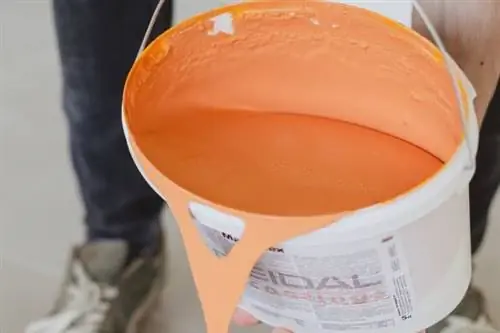
Note:
In liquid form, paint residues must therefore not be disposed of with household waste, toilets, drains or gullies. Anyone caught doing this will face a fine.
Receiving points for paint residues
Some hardware stores accept leftover paint in the bucket free of charge. If this is not the case in the area, it is worth contacting the city cleaning department. So-called pollutant mobiles offer the possibility of collection in public places. However, these variants are often accompanied by longer waiting times. In addition, the quantities should be small, as the mobiles usually go to several stations and have limited capacities.
If, on the other hand, you would like to dispose of large quantities of wall paint and ideally immediately, recycling centers are your ideal place to go.
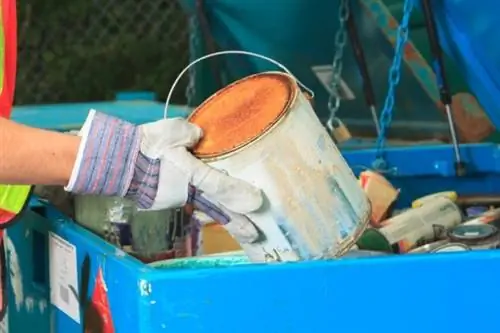
Let the paint dry out
If you don't want to make a special trip, you can let the wall paint dry out so that you can easily dispose of it with household waste later. All you need to do is a few steps:
- Remove the bucket lid completely.
- Place paint outside or in a well-ventilated room.
- Wait a few days.
- Remove the paint if possible and dispose of both the paint residue and the bucket separately. Otherwise, put everything in the household waste.
The clear advantage of this is that there are neither long distances nor costs. However, for larger quantities, it may take several weeks to dry out completely. Therefore patience is required.

Tip:
The process is faster if a warm location with low humidity is chosen.
Store leftover paint
Disposing of opened paint buckets directly is wasteful and can quickly become a disadvantage, especially when it comes to home-made paints. Scratching the wall unfavorably once can make it necessary to use it again. For such and similar cosmetic corrections, it makes sense to save the wall paint. The following requirements must be met:
- dark
- cool, but frost-free at over 5°C
- packaged airtight
Wrapped tightly in foil and stored in the garage or basement, wall paint can last for about two years. The same period applies to paint buckets that are still originally sealed.
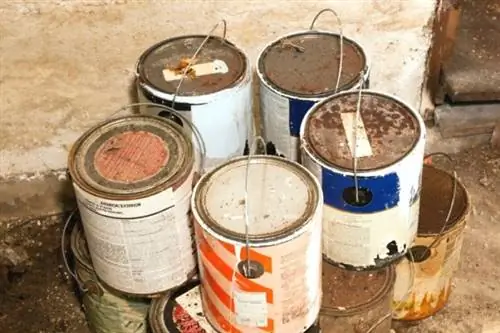
Note:
Severe temperature fluctuations should be avoided when painting walls. A cellar with an even temperature is therefore better than a sunny corner in the uninsulated garage.
Costs
If you want to dispose of small amounts of wall paint in a waste disposal vehicle, at a hardware store or at a recycling center, there are usually no costs. However, due to regional differences, it makes sense to find out about this in advance from the city cleaning service or the relevant market.
If you have larger quantities of liquid paint - for example because it is no longer usable due to incorrect storage or storage for too long - you usually have to expect costs for disposal. These depend on the composition, but are usually small:
- Emulsion paint approx. 30 cents for 10 kilograms
- Solvent-based paints 1 to 2 euros per 10 kilograms
Tip:
For private households, up to 20 kilograms of paint residue is usually disposed of free of charge. Here too, it is advisable to contact the relevant authorities beforehand to avoid surprises.
Frequently asked questions
Where do I dispose of paint rollers and brushes?
If paint rollers and brushes are soaked, washed thoroughly and dried immediately after use, they can be reused without any problems. If you would rather dispose of them, you should let the paint residue dry for at least two days and then put the utensils in the trash.
How long does it take for wall paint to dry out in the bucket?
Temperature, humidity and quantity play crucial roles here. If there is little color left in midsummer, one day is usually enough. If the bucket is still half full, you should allow at least a week for it to dry out outdoors.
How can I reuse leftover paint?
Disposing of liquid paint or intentionally letting it dry out is wasting money. It is better to store the paint properly. This makes it available for repairs or other projects. Alternatively, you can use it to design picture frames, canvases, wooden shelves, etc.
Will old wall paint be accepted at hardware stores?
Some hardware stores offer this service for paint that is still liquid or has already dried out. If the hardware store is closer than the recycling center, it's worth asking. In terms of costs, the hardware store is often the cheaper option.

